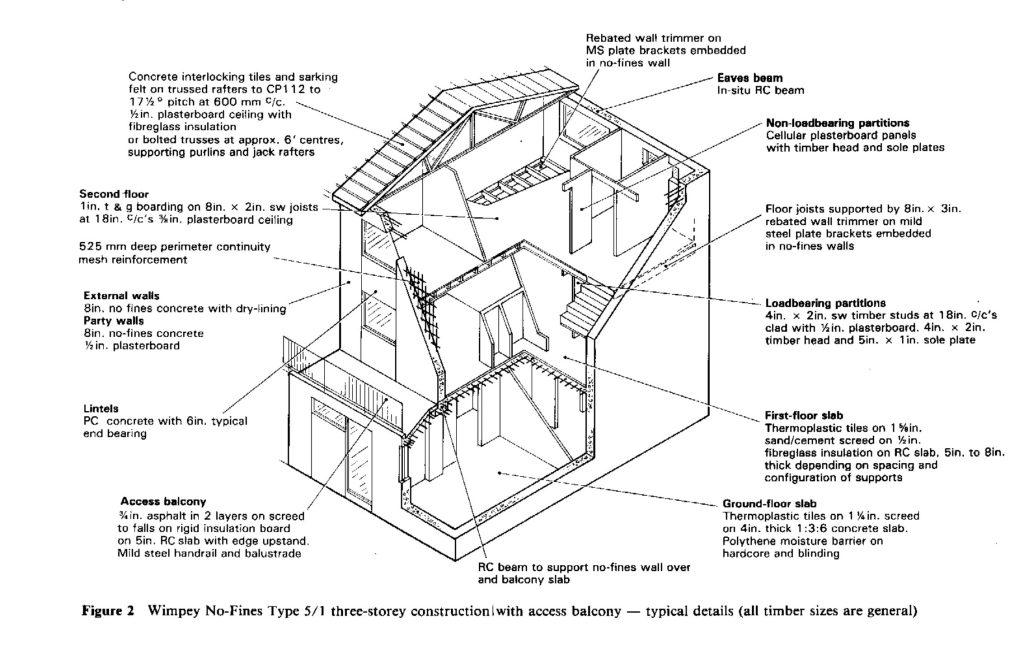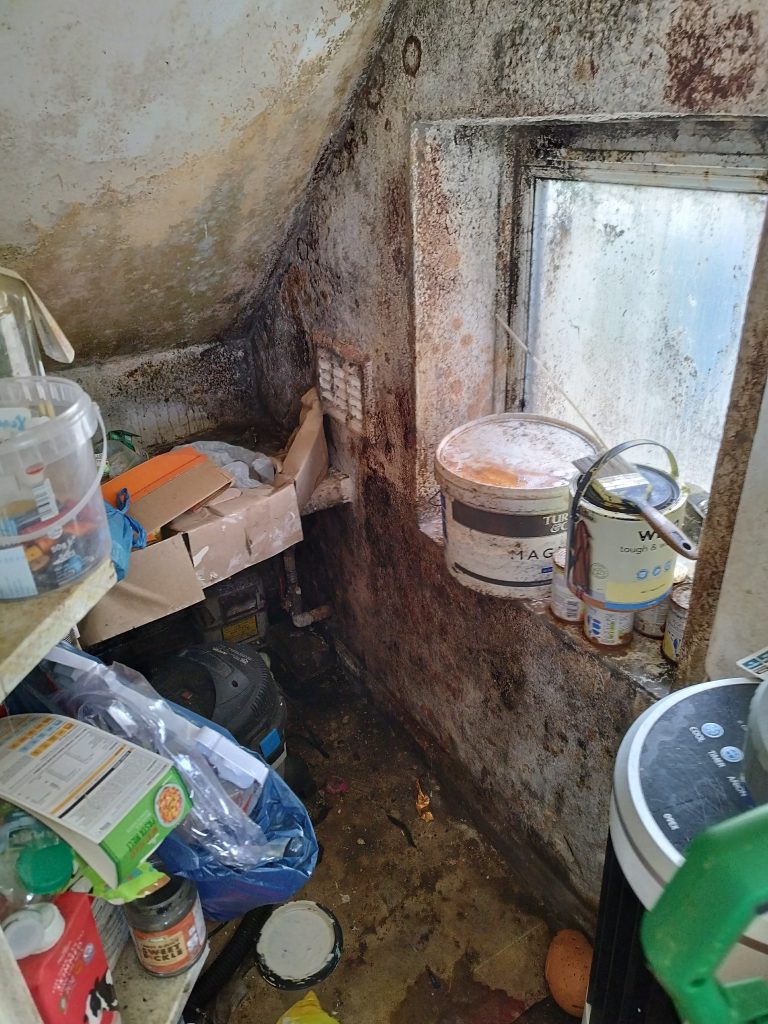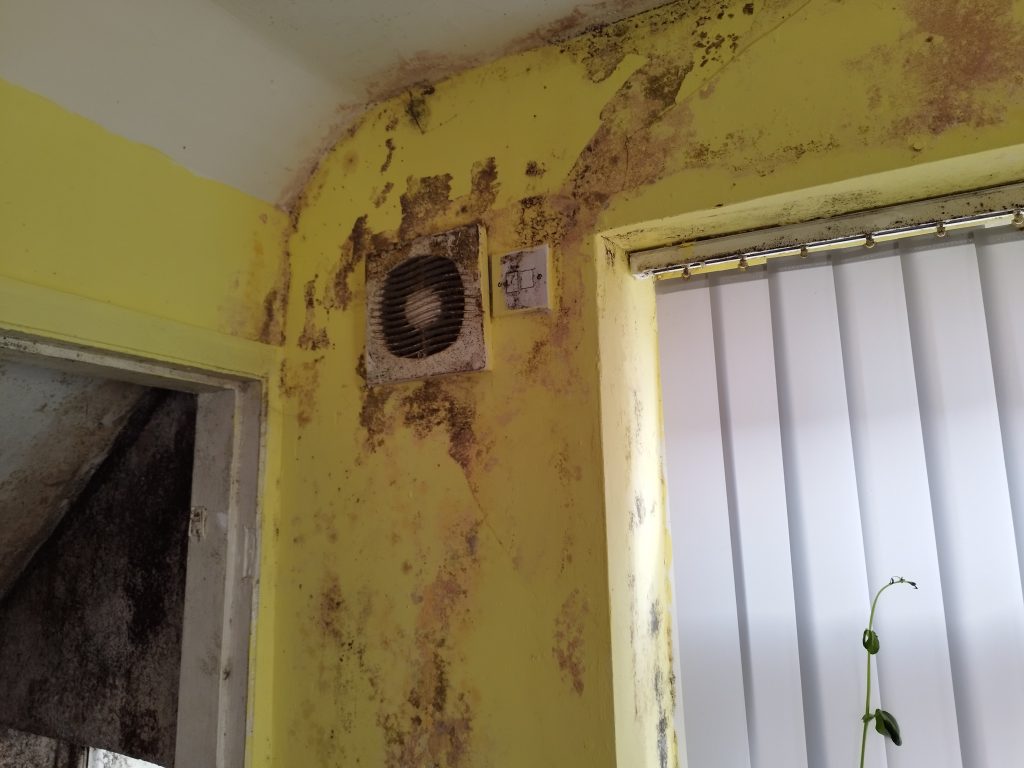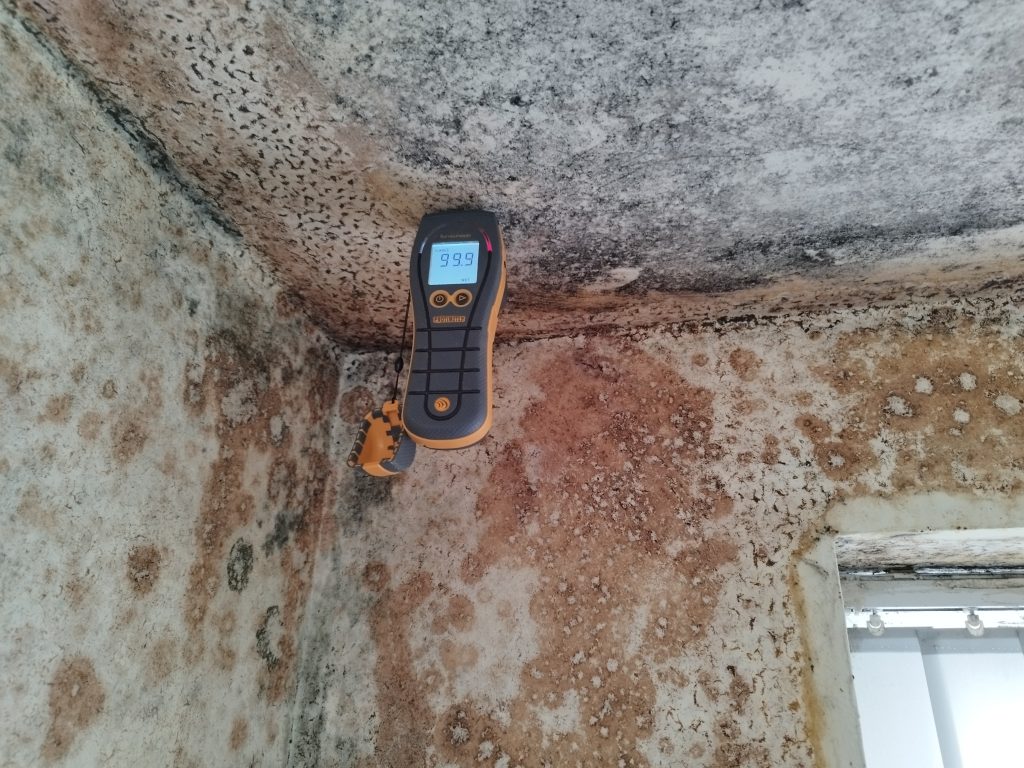
I dealt with one of the more severe cases of condensation damp and mould in a Wimpey No Fines house, that I’ve ever encountered this week and thought it would be useful to reflect on why the mould was so severe in this property.
What is a Wimpey No Fines?
This particular property has 12 inch thick solid concrete walls, which dates it to between 1951 and 1964. The solid concrete walls are cast in -situ on site, with the concrete poured into temporary shuttering. As the no-fines name suggests, the concrete consists of large aggregate and cement paste with no fine sands or sharp sands in the mix. This allows for air pockets to form between the aggregate which increases the thermal value of the concrete. That being said, times move on, and the thermal performance in a no-fines homes is well below current requirements.

Problems with Wimpey No Fines Homes
The Building Research Establishment (BRE) identified a number of problems with Wimpey No Fines non-traditional housing stock but this blog will be focussing on two in particular:
- HEATING DIFFICULTIES – Excessive heat loss from the building and expensive to run heating systems; an issue which has become even more relevant given the current ridiculous energy costs.
- CONDENSATION AND MOULD – Surface condensation, mould growth and the presence of cold bridges.
Much of the remaining no fines stock has been retrofitted with external wall insulation carried out under government backed energy schemes such as CESP or CERT but this particular property remains ‘as built.’
Damp & Mould Complaint
The property is tenanted and this week the landlord received a call from his tenant to say that she had damp in the property and could he come and inspect. He was shocked when he arrived and saw just how bad the property was and called me to carry out a damp investigation. The following images highlight just how severe the mould was in this property.




Moisture Testing & Assessment
In some respects, assessing a no fines house is fairly straightforward since we already understand the cold bridging issues and how these present a high risk of condensation damp and mould. We do need to check that there is no moisture at depth in the building fabric and this can generally be done using deep wall probes, since sampling for calcium carbide testing is very difficult.
We consistently found very high surface readings in the hard plaster system but low moisture at depth in the building fabric, which confirms the issue as being caused by chronic cold surface condensation.


Why did the mould get so Severe?
As I’ve repeatedly said for many years, tenants cause humidity but buildings cause condensation and there is no doubt that lack of effective insulation levels, lack of mechanical extraction and lack of heating use all contributed to the condensation and mould outbreak seen in this property. Some of you may already be jumping to criticise the landlord, but he was completely unaware and horrified at how this situation has been allowed to get this bad. The tenant is an unemployed single mother and more worryingly, is keeping an infant in these conditions and yet must have been living like this for many months without reporting the issue to her landlord. My next point will make uncomfortable reading for some but it has to be said… The mould was allowed to get so severe because the tenant had no interest in cleaning or maintaining the property, and generally speaking, the property was filthy. Yes, mould is a common issue in these properties and technical deficiencies need to be addressed, but mould which is allowed to propagate to this extent takes a real commitment to neglecting even basic standards of hygiene.
I’ve encountered this issue before when surveying a number of properties on the same estate, all identically constructed, some riddled with mould where the house was also filthy, and others having barely any mould because the the tenant was house proud and cleaned any mould from the walls as soon as it surfaced. Yes, landlords have an obligation to keep their properties in good repair and free from damp and mould but tenants also have a responsibility to care for their homes, and to notify the landlord when problems arise.
Unfit for Human Habitation?
The visual inspection alone tells me that this property is currently unfit for human habitation and air quality testing also highlighted a reduction in indoor air-quality. I have recommended that a minimum of 80mm of PUR insulation be installed to internal perimeter walls and all the mould contaminated plaster will be remove from internal walls. Works will be so disruptive and involved that the tenant cannot remain in occupation during these works. That being said, it would be foolish to risk your health, or that of an infant, in remaining in this property.
I have estimated that internally insulating the walls and other associated works will cost in the region of £20k and the landlord will be completing these works in the very near future.

Leave a Reply